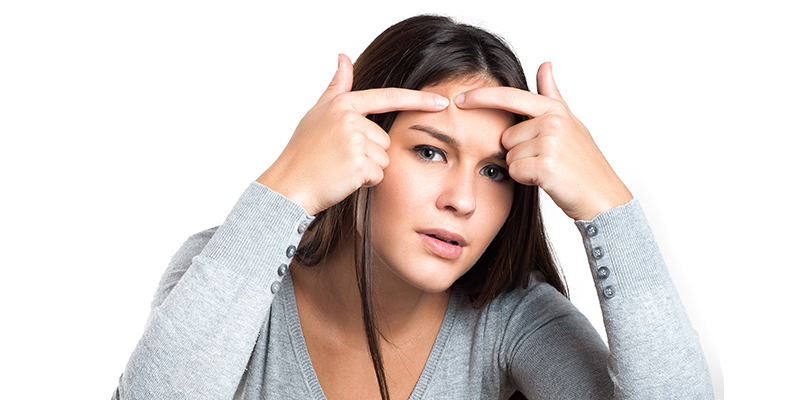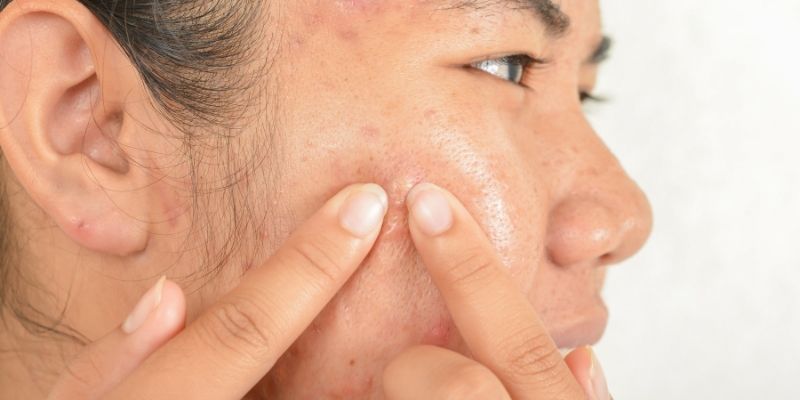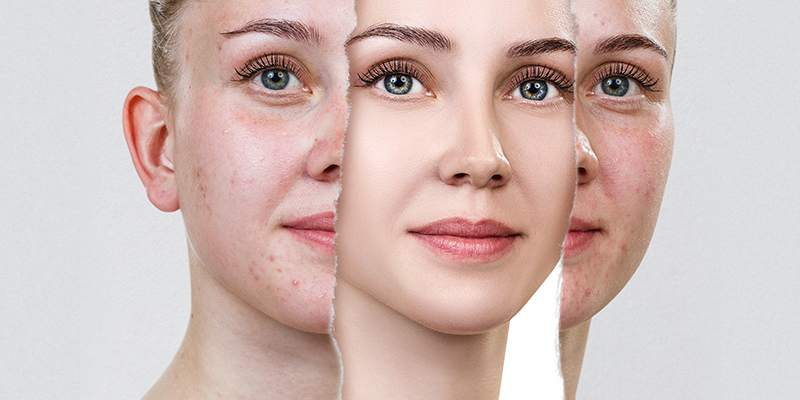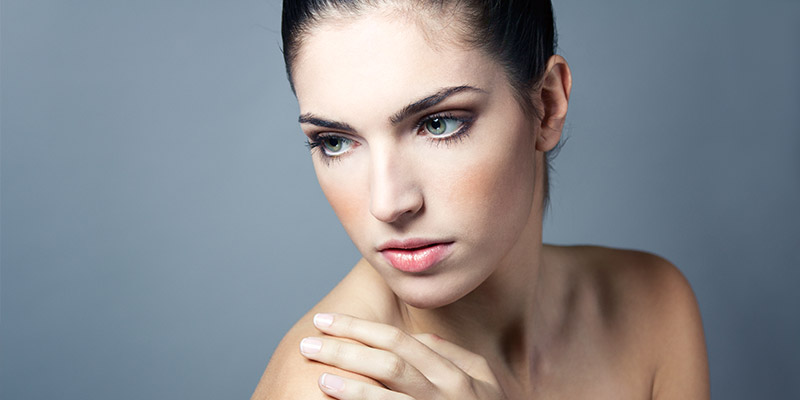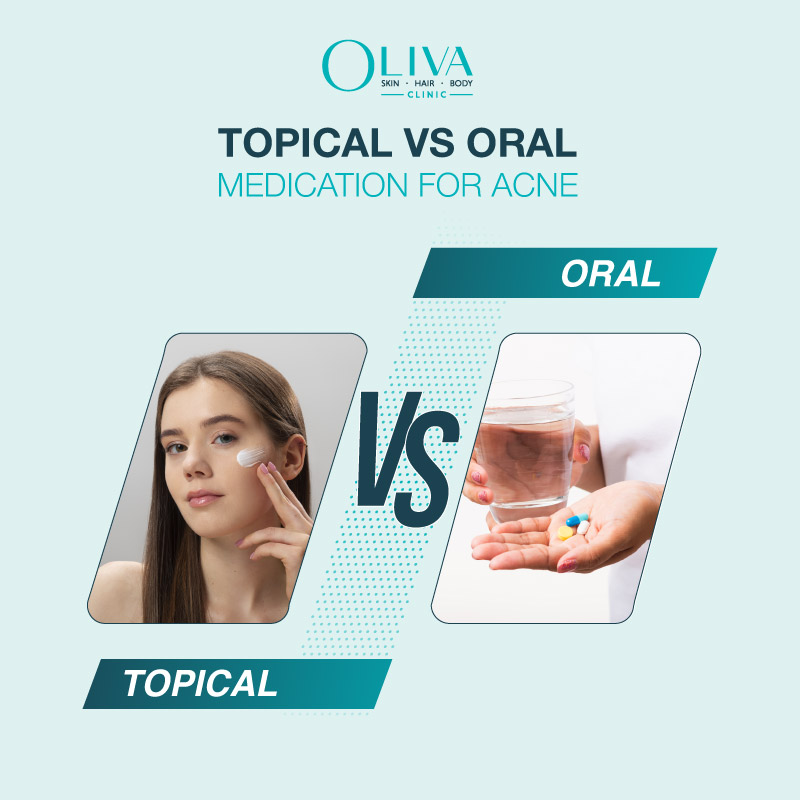In This Article
How To Remove Blemishes On Face?
Any form of imperfection on the skin is undesirable. Especially when it comes to unsightly blemishes, they can be emotionally upsetting. Blemish is a loose term used for any skin mark. It can be a blackhead, whitehead, a pustule, age-spot or post-acne mark. Most of the blemishes are non-threatening yet some may signal some underlying medical issue. Almost everyone will experience a blemish in their lifetime. If you are suffering from odd blemishes and want a problem-free skin, then this post will help address all spot-related blemish concerns.
In This Article
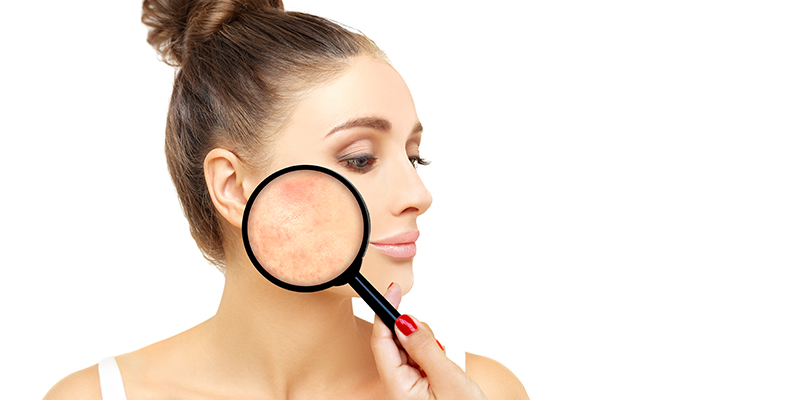
What Are Blemishes?
Blemishes refer to any type of spot, mark, flaw or skin discoloration left behind due to acne, whiteheads, blackheads or pimples. They can develop anywhere on the skin but mostly on the face, back, chest, upper arms or any body part that has hair follicles or open pores. Face blemishes are actually a common occurrence in many people.
How To Know If You Have Blemish Prone Skin?
Here are the common symptoms of blemish prone skin:
- Uneven skin tone
- Skin discoloration
- Itching or skin irritation
- Brown or reddish patches on the skin
- Inflammation of the skin
- Appearance of pustules which are inflamed and painful
- Dryness of the skin
- Eruption of pus from the bumps on the face
- Change in skin texture from soft to rough
Types Of Blemishes
Blemish is a broad term and can have many types as we know. Generally, scars left behind by acne lesions are one of the most common types of facial blemishes. Some other types of blemishes appearing on skin are:
- Acne Marks: Scars occur as a result of damage caused to the dermis layer of the skin. Anything that causes the skin to open such as a pimple or a wound can lead to scarring.
- Blackhead: A blackhead is an open comedone that occurs when the plug (made up of sebum and dead skin cells) enlarges and widens the pore.
- Whitehead: Whiteheads are closed comedones as they are covered with skin, contrary to the blackheads. They usually appear red and tender with their tips filled with pus.
- Papules: Papules are small to medium-sized bumps on the skin which are dome-shaped. Papules can be brown, purple, pink or red in colour, and can cluster into a papular rash.
- Acne Pustules: Pustules are lesions that have white or yellow base due to the accumulation of pus. They are formed when oil, bacteria and dirt get trapped within the pores of the skin attracting blood cells to fight the infection.
- Nodular Acne: Nodules are large and painful bumps that extend deeper into the skin. The nodules are solid and large than papules in size. They often leave scars on the skin. Some examples of nodules are skin tags and warts.
- Sebaceous Cysts: Cysts are sac-like structures made up of oil, bacteria, white blood cells and red blood cells. They may last for months and require advanced treatment. Different types of cysts include epidermoid cysts, ganglion cysts and sebaceous cysts.
- Pigmented Blemishes: Hyperpigmentation is a condition characterized by the appearance of dark patches or uneven skin tone due to overproduction of melanin.
- Age Spots or Liver Spots: Age spots are usually small, dark spots that can appear anywhere on the body that has been exposed to the sun. They are a common type of hyperpigmentation and usually occur in people over 50 but can also occur in younger age groups.
- Melasma Spots: Melasma is a common occurrence during pregnancy. They appear brownish in colour and occur due to hormonal changes as well as sun exposure.
Must Read: What Is The Most Effective Treatments For Pimples?
What Causes Blemishes On Face?
Face blemishes are caused by a number of factors that lead to the clogging of the pores. Let us look at the reasons causing skin blemishes on the face in detail:
- Genetics: Hereditary reasons can cause blemishes to occur. There are some inherited disorders and conditions that lead to the formation of blemishes such as Fabry disease which involves gene mutation leading to dark, red spots.
- Sun Exposure: Overexposure to sun’s harmful UV rays is one of the reason behind common face blemishes and hyperpigmentation.
- Excess Oil Production: Pimples form as a result of excessive oil production by skin’s sebaceous glands, leaving them clogged due to the accumulation of dirt and dead skin cells.
- Hormones: Most blemishes occur due to hormonal changes during pregnancy, menopause, metabolic shifts and menstruation. A hormone called androgen hyperactively increases the oil production offering a perfect breeding ground for bacteria thus leading to blemishes.
- Diet: Some dairy products such as skimmed milk can cause acne or pimples in some people. Also, high sugar intake and carbohydrate diet may lead to papules and pustules.
- Certain Medications: Certain medications such as corticosteroids may cause acne as a side-effect and eventually leading to face blemishes.
- Allergies: Some food allergies can cause skin irritation or bumps that impact the skin.
- Improper Skin Care Routine: Your face accumulates a lot of dirt, pollution or dust throughout the day. Lack of a proper skin care routine as per your skin type can lead to face blemishes. Also, heavy make-up can end up clogging your pores resulting in more face blemishes.
Facial Blemishes And Their Colours
Blemishes are characterized by their colours and can provide important clues to their cause. We are listing down the common blemish colours you are most likely to experience:
- Red: Red blemishes appear on the skin as a result of skin conditions such as eczema or rosacea. Other types of red blemishes on the face include pimples, pustules, ingrown hair, cold sores, allergic reactions etc.
- Brown: Brown blemishes usually result due to hyperpigmentation which cause an increase in melanin/ dark pigment of the skin. Two most common types of brown blemishes include age spots and melasma.
- Black: Black blemishes on face occur due to hyperpigmentation leading to a particular area of the skin to appear darker than the rest. These appear as dark blemishes on face and may be surrounded by red or black raised dots. Three types of black blemishes include lentigines, melasma and post-inflammatory hyperpigmentation.
- White: White blemishes appear as white spots spread across your cheeks or larger part of the face due to fungal infection or other reasons. Whiteheads are common types of white blemishes.
Must Read: How To Get Rid Of Deep Acne Scars?
Do Blemishes Go Away On Their Own?
When it comes to blemishes on the face, most are harmless and go away eventually. Our skin starts its defense mechanism to get rid of them as soon as they occur. But it may take weeks, months or years for them to go away depending on the type of blemish and time taken for healing.
Treatments For Blemishes On Face
The removal options and remedies can help us achieve blemish-free face. It is important to visit your dermatologist to find out the right treatment option for you.
-
Topical Medications:
The dermatologist prescribes topical medications as the first line of treatment against common face blemishes. In case of mild to medium blemishes, topical creams or lotions containing Vitamin A are generally prescribed. Some examples include tretinoin, tazarotene and adapalene.
The dermatologists also suggest using creams containing benzoyl peroxide and salicylic acid to remove the blemishes. Various products containing salicylic acid as an active ingredient are easily available in the market and can be used every day to prevent blemishes. The topical creams and gels work by reducing the inflammation and killing the bacteria present inside the pore to help fade away the blemish. -
Oral Medications:
For people suffering from severe blemishes, the dermatologists may prescribe medications to be taken orally along with topical ones. Oral antibiotics are usually prescribed and results can be seen within 6 weeks. Tetracycline is a popular antibiotic prescribed by the dermatologists in India but the course duration differs from person to person.
The doctor may also prescribe birth control pills to treat certain types of blemishes. Apart from that, some over-the-counter topical antibiotics are an inexpensive option to treat blemishes. Creams containing Resorcinol, Azelaic acid and Retin-A are highly recommended against blemishes. -
Chemical Peels:
Chemical peels are advanced skin treatment options used to remove the outer layer of the skin. Peels with different strengths of chemicals namely light, medium and deep, are chosen on the basis of the severity of the blemish. Some popular chemical peels used to get rid of blemishes are Salicylic acid peel, TCA peel, pyruvic acid peel, Jessner’s peel, lactic acid peel, glycolic peel etc.
-
Laser Resurfacing:
Laser resurfacing is an effective option to consider in removing dark blemishes on the face. This treatment uses light energy from laser to remove the top layer of the skin as well as stimulate the layers underneath in the production of collagen. Depending upon the severity of the blemishes, more than one session of laser resurfacing is required. The treatment is highly effective in getting rid of acne scars, age spots, discoloration due to overexposure to the sun, improving skin texture as well as increasing skin elasticity.
Must Read: How To Remove Old Scars?
How To Prevent Blemishes On Face?
Prevention is the best way to get a blemish-free face. We have listed some preventive measures and helpful tips to remove blemishes from face:
- Healthy Hygiene Habits: Adopting healthy hygiene around yourself is the first step in preventing the occurrence of blemishes. Make sure to thoroughly cleanse your face in the morning and before going to bed. Change your sheets and pillowcases weekly to avoid any infection by bacteria.
- Changes In Diet: Having a healthy diet rich in vitamin C and E will help to keep your skin healthy and blemish-free. Also, avoid dairy products such as milk, cheese and sugars that may be breaking you out.
- Sun Protection: Sun protection is of utmost importance to prevent the occurrence of sun spots. Always use a broad spectrum sunscreen to protect against UVA and UVB rays.
- Proper Skin Care Routine: Adopt a proper skin care routine as per your skin type or recommended by the dermatologist. Also, look for non-comedogenic and oil-free skin care and makeup products that won’t clog the pores.
- Exfoliate Regularly: It is important to exfoliate the skin regularly and keep pores clean. Mild scrubs containing anti-bacterial ingredients are considered one of the best face scrubs for blemishes.
- Hydration: Drinking up to 3 liters of water ensure that your skin is sufficiently hydrated and flushing out toxins to keep skin blemishes at bay.
- Avoid Touching Your Face: Resist the temptation to touch your face all the time, especially when you have any bumps on the face as it may spread the blemishes further.
Must Read: What Is The Best Skin Care Routine For Acne?
Blemish Prone Skin Care Tips
An ideal skin care routine for blemish-prone skin consists of four important steps to be followed diligently. Here are they:
- CTM (Cleanse, Tone, Moisturize): It is important to cleanse your face thoroughly with a gentle, soap-free cleanser that doesn’t strip the skin of its natural oils. Follow it with an alcohol-free toner to tighten your pores and finally apply a non-comedogenic moisturizer to conclude the skin-care routine.
- Exfoliate Once A Week: An antibacterial scrub is considered the best one to slough away dead skin cells, clean pores and kill the bacteria present inside the pore. Look for ingredients such as alpha hydroxy acids or AHAs in the scrub as it will help boost skin renewal. Also, make sure to gently exfoliate at least once or twice a week.
- Protect The Skin: Protecting the skin from sun’s harmful rays is extremely important. Make sure you wear a sunscreen with SPF 15 or above when you step outdoors.
- Sanitation: Your hands are the carrier of bacteria and germs so make sure that you never touch your face without sanitizing your hands first. This is applicable even while applying lip balms. Use a Q-tip or clean hands to apply the lip balm.
Frequently Asked Questions
It is important to unclog the pores and keep them thoroughly cleaned in order to keep away from blemishes. Having a proper skin care routine and regular exfoliation is good for blemishes caused by acne. Also, keeping your skin protected from sun with a broad spectrum sunscreen is good for keeping blemishes at bay.
Face scrub helps in exfoliating the upper layer of the skin that helps in removing blemishes. It does so by unclogging the pores, killing the bacteria and scrubbing away dead skin cells to even out the skin. It is important to be gentle on the skin while scrubbing and use mild strokes while scrubbing.
Every person’s skin is different so the exact time for the blemish to fade cannot be determined. It largely depends on how fresh your blemish is and how fast the skin starts to heal it. In some cases, significant results can be seen in 4 to 6 weeks while in other cases, it may take 2 to 3 months to fade the blemishes completely. In rare cases, some blemishes may take years to fade.




